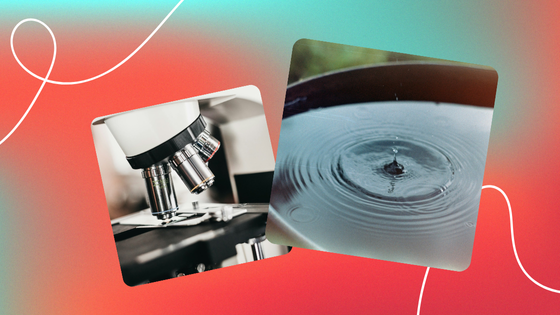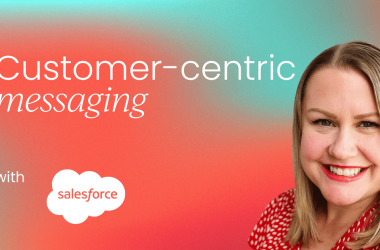For most of us, our daily lives are completely intertwined with digital tools. The simple act of communicating, searching for information and shopping has been transformed in ways we could not have imagined just two decades ago.
Gone are the days spent wandering the aisles, searching and comparing products. A staggering 5.9 million Google searches every minute in 2023 is striking evidence of our collective thirst for immediacy, a clear indicator of how the traditional shopping trip has evolved into a series of quick, decisive moments.
A survey conducted in the US and Canada reveals that, on average, consumers now research online before 61% of their purchases. This represents a 25% increase from 2022, highlighting a significant shift in shopping behaviour.
In the midst of this change, Google’s introduction of the concept of “micro-moments” years ago has never been more relevant. This notion, which eloquently captures the essence of the evolving consumer journey, is proving to be a great way to establish meaningful connections with your audience.
In this article, we will unpack the concept of micro-moments and discover how we, as marketers, can harness their power.
Understanding micro-moments
Micro-moments occur when a person instinctively picks up a device to satisfy an immediate need, query or desire. These moments are full of intent. They represent the desire to learn something, do something, go somewhere, or buy something.
The essence of micro-moments lies in their immediacy. Users expect to receive exactly what they‘re looking for when they’re looking for it. This demand for instant and relevant content requires companies to anticipate and develop specific strategies that respond to needs as they happen.
Micro-moments introduce a richer view of the traditional customer journey. It’s no longer about a few critical touchpoints, but a constellation of moments, each offering a unique opportunity to capture and enhance the customer experience.
Let me clarify this concept a little. Let’s consider a familiar scenario of choosing a holiday destination. Picture it:
- Want-to-know moments: Max is commuting to work with his eyes glued to his phone as he dreams of his next getaway, searching travel blogs, Instagram feeds, and reviews for inspiration on possible destinations.
- I-want-to-go moments: A little later, Max has narrowed his focus to a few places. Now it’s time to compare flights, accommodation, and attractions, taking into account factors such as cost, duration and comfort.
- I-want-to-do moments: Decision made. His next holiday will be in Ireland. Max is already imagining his getaway to Ireland and planning the experiences he wants to cross off his bucket list. Now, it’s time to turn that dream into a plan.
- I-want-to-buy moments: As departure time approaches, attention turns to final shopping. Max secures his plane tickets and hotel, and books the long-awaited sea cave kayaking experience in County Wexford. He even buys clothes suitable for the unpredictable Irish weather.
Understanding Max’s micro-moments and his journey opens up countless additional avenues to interact with him in a more meaningful way.
For example, during the “I-want-to-go moments” phase, sending targeted ads with attractive flight and accommodation offers could capture Max’s attention. Similarly, in the “I-want-to-do moments” phase, showcasing unique local experiences could help him decide.
Learnings from the travel and leisure industry
Few industries exemplify the power of micro-moments as well as travel and leisure. It’s no coincidence that this sector is frequently cited as an excellent example of how to take advantage of these opportunities.
In travel, the journey from daydreaming to departure spans months, weaving together numerous planning stages, from choosing a destination and accommodation to travel logistics.
Throughout this extensive decision-making process, users consume content voraciously; in fact, data from 2023 shows that, on average, a traveller browses 141 pages of travel-related content in the 45 days prior to booking.
This figure staggeringly doubles to 277 pages for US-based travellers. This staggering volume of page views is evidence of the curiosity and thoroughness with which today’s travellers approach their planning.
Furthermore, when analysing the methods used by these travellers to plan their trips, a remarkable 42% rely on random internet searches. This is not just a number, but an indication of the customer psyche, which points to a high, albeit dispersed, demand for relevant, engaging and timely content.
The application of micro-moments in the tourism and leisure industry is not only widespread, but is arguably where it has the most impact. A compelling example of this strategy in action is Oracle’s collaboration with Disneyland Paris. Using contextual intelligence, they created ads that not only reached the audience, but resonated with them by appearing in the right context at the right time.
Oracle Advertising used contextual solutions in both display and video campaigns. This resulted in a 250% reduction in the cost per acquisition of display ads and a remarkable doubling of conversions.
This success case demonstrates not only the power of being present at the right micro-moments. For travel and leisure companies, and indeed for all industries, this is a crucial lesson.
The path to capturing a micro-moment starts with understanding the complex multi-device, multidimensional customer journey. It’s also about crafting content and strategies that are not merely visible, but meaningfully integrated into customers’ lives and preferences.
Best practices to start with micro-moments
Before we dive into best practices, it’s worth mentioning that if you’re new to micro-moments, there are fantastic resources available that can illuminate this concept from the very basics. We won’t cover the basics here, but check out this article which I highly recommend. It offers a complete guide on how to get started with micro-moments and integrate them into the customer journey.
Now, let’s explore some of the best practices to effectively engage with your users through micro-moments.
Combine qualitative and quantitative methods to uncover micro-moments
Understanding your audience needs and behaviours is critical to effectively leverage micro-moments. This requires a combination of qualitative and quantitative research methods.
Dive deep into the data to decipher the what and why of your audience search motivations. In addition, qualitative methodologies, such as in-depth interviews and focus groups, are invaluable in adding context and depth to the numbers.
Focus on bite-sized content
Use bite-sized content such as short videos, infographics and quick, practical tips. The key is to create content that is not only clear, concise and visually appealing, but also respects the consumer’s time. Be creative by reusing existing content or creating new pieces tailored to these micro-moments.
Create a multichannel micro-moments strategy
Users expect a fluid narrative throughout their digital journey, regardless of whether they start their search on one device and then switch to another. To meet this expectation, a multichannel strategy for your micro-moments is crucial.
Leverage new tools and technologies
New technologies and tools can help you power your micro-moments strategy. Some of the most interesting ones are:
- Contextual targeting: Place ads in the right context so that they appear alongside relevant content. Tools such as Google AdSense and Oracle Advertising make this task easier and increase the chances of attracting attention at critical micro-moments.
- Location-based marketing: Geo-targeting can turn “I-want-to-go moments” moments into opportunities. By targeting ads to users near your business, you not only invite spontaneous visits, but can also increase conversions with timely, localized promotions.
- Retargeting: Don’t let initial interest fade. Use retargeting to keep your brand in users’ minds and guide them back with the allure of what initially caught their attention.
- AI-powered customer service tools: AI can provide instant assistance, personalized and predictive responses based on user behaviour.
Final thoughts
Delving deeper into the customer journey through micro-moments undoubtedly brings us closer to our users. When we combine this approach with the aforementioned tools and technologies, we unlock a new avenue for interacting with our audiences that allows us to create experiences that connect directly with their immediate needs.
Yet, as I add the finishing touches to this article, a scene from Jean-Pierre Jeunet’s film “Big Bug” (2022) comes to mind. In it, digital advertisements appear in the windows of people’s homes, telling them in a very loud voice what they apparently need.
This image sticks with me, as a warning that the essence of our efforts must always focus on understanding and respecting our users. Deep empathy will ensure that we do not cross the fine line between helpfulness and intrusion
Adopting a micro-moment lens is enriching and complex. It is a mix of creativity, understanding and analytical skills. My exploration, particularly in the tourism and leisure industry, demonstrates its enormous potential. It is about more than increasing engagement or conversion rates. It’s about creating deeper and longer lasting bonds with our audience.






